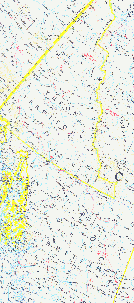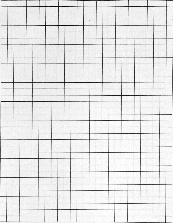High School Mathematics Problems from Alaska
A database
of lessons and units searchable by content and cultural standards,
cultural region and grade level. More units will be available soon.
You can use Acrobat Reader to look at the PDF version of the Cover
Sheet
for the Units and Self-Assessment
for Cultural Standards in Practice.
AL-CAN
Highway Problem
Mary Lou
Smart
Southeast Island School District
msmart@sisd.k12.ak.us
MS
Word Download
Standards:
Measurement, Functions and Relationships.
Performance
Standards:
A2.3.2, A2.4.2, A2.4.3, A4.3.2, A4.3.4, A4.3.5
Concepts:
Creating a table of ordered pairs, using variables (dependent
and independent), writing equations, converting metric and standard
measurements for distance using mileposts.
Carnegie
Chapter:
Modeling Situations with formulas, Tables of Values, and
Graphs.
Overview:
The student will write and solve equations converting between
metric and standard measurement as they travel southeast on the
Al-Can Highway.

Click on map for a larger view
Alaska-Canada
Highway
Task
1
We are going on a
trip on the Alaska-Canada (Al-Can) Highway traveling southeast toward
Dawson Creek. We begin our trip at Delta Junction, which is milepost
number 1422, meaning that it is located 1422 miles from the origin of
the Al-Can at Dawson Creek, BC. We will be traveling at 60 miles per
hour starting at milepost 1422.
- At what
milepost will we be if we drive for:
- five
hours?
- eight
hours?
- Write a
complete sentence describing how you found these
answers.
- Write an
algebraic equation for this problem. Define any
variables.
- Use the
equation you created in question 1d to find out the milepost we
are at after traveling for 11 hours at 60 miles an hour. Solve
this equation, showing your work, and write your answer in a
complete sentence.
- When we arrive
at Port Alcan (the US-Canadian border), we are at milepost 1222.
Write an equation you can use to find how long it took you to
travel from Delta Junction to Port Al-Can. Solve this equation,
showing your work, and write your answer in a complete
sentence.
- Use the
information from questions 1-3 to complete this table.
|
Labels
|
|
|
|
Units
|
|
|
|
Expressions
|
|
|
|
|
5
|
|
|
|
8
|
|
|
|
11
|
|
|
|
|
1222
|
|
|
|
1152
|
- Graph the
equation for this problem situation. Label
axes and number the intervals to show scale.

Click on image for a larger
view
- Extension
problem - While at Port Al-Can, we meet some fellow Alaskans who
want to know how long it should take them to reach Fairbanks
(milepost 1520) if their average speed is 60 miles an hour. Write
an equation for this problem situation. Solve this equation,
showing your work, and write your answer in a complete sentence.
Explain how you solved this equation.
Alaska-Canada
Highway
Task
2
When we enter
the Yukon Territory, we find that Canadians designate distances
on the Al-Can with kilometreposts. We know that 1 mile equals 1.6
kilometers.
- How many
kilometers are there in:
- 200
miles?
- 500
miles?
- Write a
complete sentence describing how you found these
answers.
- Write an
equation you can use to find how much time it will take us at 60
miles an hour to reach Whitehorse, kilometrepost 1425, from Port
Alcan. Solve this equation, showing your work, and write your
answer in a complete sentence. Write a sentence describing how you
solved the equation.
- Write an
equation you can use to find out what kilometrepost we will be at
if we continue an average speed of 60 miles an hour and we travel
an additional three and a half hours from Whitehorse. Solve this
equation, showing your work, and write your answer in a complete
sentence.
- Write an
equation you can use to find out how many more miles we need to
travel to reach Fort Nelson, which is at kilometrepost 456, after
we have traveled six hours from Whitehorse. Solve this equation,
showing your work, and write your answer in a complete
sentence.
- Write an
equation you can use to find out how much time it will take to
reach Dawson Creek, which is at kilometrepost 0, after we have
traveled two hours from Fort Nelson. Solve this equation, showing
your work, and write your answer in a complete
sentence.
- Use the
information from questions 2-5 to complete this
table.
|
Labels
|
|
|
|
Units
|
|
|
|
Expressions
|
|
|
|
|
|
530.2
|
|
|
3.5
|
|
|
|
6
|
|
|
|
|
264
|
- Use the table
to graph the equation for this problem situation. Label axes and show the
scale.

- Since the speed
we traveled in both Alaska and Canada remained the same, how do
you adjust the increments on your graphs so that the slopes are
congruent? Graph both equations using these increments. Be sure to label axes,
indicate intervals, and create a title for the graph.

Addendum to
Alaska-Canada Highway, Tasks 1 and 2
Actual driving
distance from Dawson Creek to Fairbanks is approximately 1,488
miles.
Driving
Distances
Driving distances
in miles and kilometers between major points on the Alaska Highway,
from south to north, are as follows:
* Dawson
Creek to Fort St. John, 47 miles / 76 km
* Fort St. John to Fort Nelson, 236 miles / 380 km
* Fort Nelson to Watson Lake, 330 miles / 531 km
* Watson Lake to Whitehorse, 272 miles / 438 km
* Whitehorse to Haines Junction, 100 miles / 161 km
* Haines Junction to Port Alcan (border), 205 miles / 330 km
* Port Alcan to Tok, 92 miles / 148 km
* Tok to Delta Junction, 108 miles / 174 km
* Delta Junction to Fairbanks, 98 miles / 158 km
Metric
Measurements
When Canada
switched to the metric system in the mid-1970s, miles became
kilometers, mileposts became kilometreposts, feet became meters, and
temperatures went from Fahrenheit to Celsius.
Some 75 percent of
the Alaska Highway lies within Canada. Along the highway, distance
markers show kilometers; local temperatures are given in Celsius; and
bridge clearances are in meters. It is a good idea to know the metric
system.
* 1 mile =
1.6093 kilometers, and 1 kilometer = 0.6214 miles
* 1 foot = 0.3048 meters, and 1 meter = 3.2808 feet
* miles x 1.6092 = kilometers
* kilometers x 0.6214 = miles
* feet x 0.3048 = meters
* meters x 3.2808 = feet
The Alaska Highway
begins at Mile 0 in Dawson Creek, BC, and leads in a northwesterly
direction through Yukon Territory to Mile 1520 at Fairbanks, AK. (The
actual end of the Alaska Highway was--and is--Delta Junction,
although because most of the early military traffic was bound for
Fairbanks, the highway was measured to that point. The 98-mile
stretch of highway between Delta Junction and Fairbanks is officially
the Richardson Highway.)
Miscellaneous
facts about the highway
- Length: 1,520
miles (traditional), 1,488 miles (driving) to Fairbanks; 1,422
miles (traditional), 1,390 miles (driving) to Delta
Junction.
- Miles in
Canada: 1,190 miles (1,915 kilometers)
- Miles in U.S.:
298
- Surfacing:
Asphalt, chip seal (tar and gravel)
- Built:
1942
- Season: Open
all year
- Highest point:
Summit (Mile 392), elev. 4,250 feet/1,295 meters
- Steepest grade:
10 percent, Steamboat Mountain (Mile 351)
Table of
Contents
For the Teacher's Guides, please email Alaska
Native Knowledge Network
Handbook
for Culturally Responsive Science Curriculum by Sidney Stephens
Excerpt: "The information and insights contained in this document will be
of interest to anyone involved in bringing local knowledge to bear in school
curriculum. Drawing upon the efforts of many people over a period of several
years, Sidney Stephens has managed to distill and synthesize the critical ingredients
for making the teaching of science relevant and meaningful in culturally adaptable
ways." |